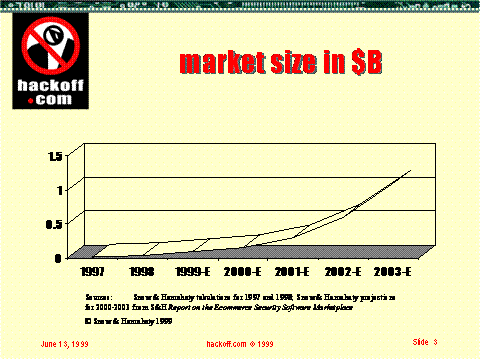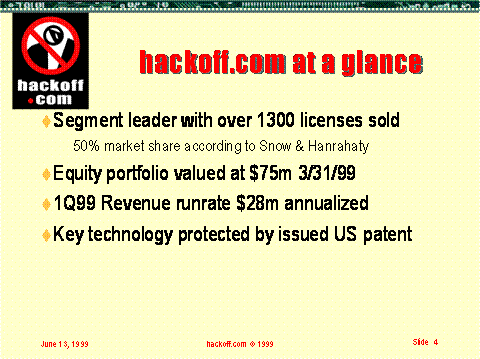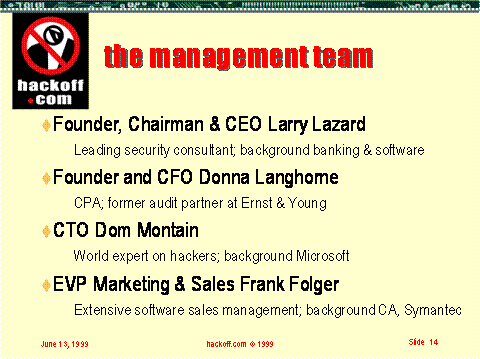Chapter 3 - The Roadshow, June 1999 - Episode 4
Listen to podcastIt’s pouring in Boston. The stretch limos fight for position in the narrow, construction-choked streets, trying to get the roadshow teams into the ornate doors of Semper Investments as dry as possible. The teams line up inside the back doors of the limos as if they were preparing for parachute jumps.
Protocol and practicality demand that the CEO come out first so he can bolt to the door unimpeded with his jacket folded under his hunched over torso. Larry Lazard has got to look his best. Next out is the CFO. Her skirt is short, but she’s good at maneuvering, knees together, to swing both long legs out the door without being either indiscreet or unattractive. She wears her jacket to the door to keep her white blouse dry.
In a courtly gesture to Rachel, whose rank requires her to carry the pitch book, Gustav gets out next, the awkward black book under his arm. Rachel follows him. Finally Rachel. With legs shorter than Donna’s, it’s not quite as easy for her to swing out of the limo but she does it reasonably gracefully. She quickly pats down her hair as she goes through the revolving door. Last out is Barcourt’s salesman for the Semper account. He gets a little wetter than the rest because he’s talking on his cell phone as he gets out and also trying to tell the driver of the limo where and when to meet them.
On Semper’s thirtieth floor there is reception desk at which the roadshow teams check in. The Barcourt salesman does that for the hackoff team. The receptionist makes him repeat the name three times, perhaps maliciously. They know each other.
“Your number is 768. Have a seat,” she says but this is a joke; there aren’t any seats.
Behind the reception desk is a crowd of teams. Five people each, almost without exception — two bankers, two principals, one salesperson. Bankers in pin-stripes; company principals in white shirts (and often pin-stripes); salespeople a little more varied with some loafers and colored shirts. Always a black pitch book. The clots of five try to ignore each other, although they have been crossing paths the entire time they’ve been on the road. Many talk on cell phones. The space is crowded, hot, and has a wet puppy smell.
There is an electronic board that lights up with red numbers to summon a team. When a number lights up, the board also displays a conference room number on one of the three floors that Semper is using to listen to roadshow pitches. The salespeople know how to find the room.
Word is that pitches are running behind. This has everyone particularly nervous because they can’t bolt out of Semper, which means that the rest of the day’s schedule will be in tatters if they leave later than they are supposed to. Much of the cell phone chatter is salespeople trying to rearrange the rest of the day on the fly.
“I’m pretty sure Tom Chen is coming to the pitch,” the salesman briefs Larry and Donna. “He runs the hot Internet fund. He looks like he’s nineteen years-old but he’s actually twenty-seven. He’s the superstar — running well over ten billion in that fund alone and advising a couple of other funds. Some of Semper’s other funds track him and tend to buy positions in whatever he buys. John Signal — he’s from a smaller special situation fund — may come as well; I’ve been talking to him and he’s interested, but has a lot going on today. We also expect the e-commerce analyst and maybe the software analyst. That’s a very good turnout if we get them all.”
“I said we’re an e-commerce company,” Larry growls to no one in particular.
Finally, 768 lights up and the salesman leads the hackoff team to the designated conference room. Tom Chen is there; he actually does look nineteen. John Signal and the software analyst are there but the e-commerce analyst is not coming. Larry looks unhappy. Everyone exchanges business cards.
“Nice name,” Tom Chen says.
“Thank you,” Donna says and smiles.
Everyone smiles.
The bankers and the salesman are asked to leave as expected since Semper never lets anyone but company stay.
“Here’s a copy of our analyst’s model for the company,” says Gustav on his way out. “If you want to talk to John Braxton about the model, you know how to reach him.”
Exeunt bankers and salesman.
Everyone sits down around the table. Larry is at the end with the pitch book and Donna is next to him on one side.
“Are these numbers any good?” Tom Chen asks Donna before Larry can start the pitch. He is looking at the printout of the spreadsheet that Gustav gave him.
“That model is an independent forecast by the Barcourt analyst,” says Donna correctly, if not completely accurately. “The company is precluded from giving forward-looking guidance not contained in the prospectus which, as a matter of fact, doesn’t contain any forward looking guidance.” She smiles.
Tom Chen doesn’t smile. “Are you comfortable with these numbers?” “Yes,” Donna says. She smiles again.
This time Chen smiles back. “Let’s get going,” he says.
It’s hard to tell if Tom Chen is listening; he doesn’t interrupt the presentation until they got to the “market size” slide. “What is the number for ‘99? It’s hard to tell from the chart.”

“Ninety mil total,” says Larry.
“What market share does hackoff have?”
“That’s on the next slide,” says Larry. “Can we move on to that?”
“Go,” says Tom Chen.

“As you can see, last year, according to Snow & Hanrahaty, we had fifty percent,” says Larry.
“Now wait a minute,” commands Chen. “If you had fifty percent of a ninety million dollar market last year, how can you have a revenue runrate of only twenty-eight mil for Q1?”
“As I explained, we often take equity positions in lieu of cash revenue. In fact, we prefer equity because it has more upside than cash. We account for the value of the equity we take very conservatively — we’re not in a hurry to pay income tax; so booked revenue for last year was ten mil and seven mil for Q1 — good growth.”
“How much of last year’s revenue was cash?” asks Chen.
Larry looks at Donna who says, “Approximately four-point-five million.”
“What market share do you expect going forward?”
“Declining from this point on, but we expect to remain the market leader with never less than a thirty percent share,” says Larry. “There is competition, but our installed base and our patented and patent-pending technology gives us a huge advantage. I won’t be happy, frankly, if we end up down at thirty percent, but I think that’s the number John Braxton used in the out years of his model.”
“It is,” says Donna.
“And what was the S&H number for total market in 2003?”
“One-point-one billion,” says Larry.
“So in 2003 you’ll have at least 300 million of revenue?”
“The company can’t make projections,” says Donna.
“Your math is good,” says Larry.
“How much of that will be cash?” asks Tom Chen.
“We are aiming for around ten percent,” says Donna. “That cash flow, plus what we’ll raise in the IPO, covers our working capital requirements so the equity grows and our shareholders aren’t diluted. After the IPO, our plan is that we’re fully funded so we don’t have to go back to the market again.”
“Go on,” says Chen“We’re really ‘e-commerce squared’ in terms of opportunity,” says Larry. There is no response from Tom Chen.
“One dimension is our growth in sales, which should be at least as fast as the growth of e-commerce. We all know that’s going nowhere but up. As you’ve seen, we get paid largely in equity. As our customers — the premier companies in e-com — grow, their stock values go up as well. So not only are investors benefiting from OUR growth, they’re also benefiting from the runup in our portfolio. John Braxton thinks it is fairly valued at 100 mil now, even though we booked it as less than ten mil in revenue when we took it in and carry it on our books for about that. So that’s why I say we’re ‘e-com squared’. And, of course, we don’t pay any taxes on the appreciation of the stocks in the portfolio until we sell them.”
“I get it,” says Tom Chen. “Do you have a slide on this?”
“No,” says Donna. “We’re not allowed to project equity values. However, there are numbers in the prospectus for the value of the portfolio at the end of the first quarter. And I believe Braxton has some projections of future valuations. Do you want me to have him send them to you?”
“I’ll talk to him,” says Tom Chen. “Go ahead.”

Chen interrupts next as Larry describes his own background as a security consultant. “I understand that you have a unique understanding of the security market…” he begins.
Larry looks him in the eye. He has practiced for this question and has answered it before. “Yes, I do,” he says. “It’s well-known and fully-disclosed in the prospectus that, near the beginning of my career, I indulged in an extremely stupid prank. I thought it was clever at the time. Since I didn’t intend to misuse the information I was able to obtain from the banks despite the security measures they had in effect., I didn’t think there were really any ‘victims’ of my prank; but there were. I confessed to this. I was sentenced to serve time in prison. I served that time; and I learned my lesson. I thought I’d have a hard time finding work once I was released. To my surprise, I had a number of offers to put my hacking skill to work as a security consultant — some from the very banks whose systems I had penetrated. I began a consulting business.
“Meanwhile, the World Wide Web and e-commerce created a much broader field for hackers and a much greater market for my services. I founded hackoff.com to create and market software that protects e-commerce sites, not only from the kind of simple attack I made in my youth, but from a whole range of threats that now exist. I’m proud to say that my customers — hackoff’s customers — have not had the problems with hackers that have plagued other e-commerce sites — which have even destroyed some sites and businesses.
“We are at a critical crossroads in e-commerce where greater consumer acceptance is needed if we’re to begin serving not only the technically adept but cross the chasm to serve the rest of the people who are or soon will be online. Hackoff and the hackmenot logo are a key part of keeping these new users safe — and making them FEEL safe.
“Although I’ll always regret the mistake I made, it did give me a unique insight into security ... and insecurity. Breaches affect not only those whose security has been compromised, but all those whose security might potentially be compromised. We have built hackoff to make users feel secure and to make e-commerce successful.”
“Let’s go on,” says Tom Chen.
Larry finishes his slides; he passes the book to Donna who reviews the company’s past financial history; its balance sheet, and its plans for the money to be raised in the IPO.
“Any questions?” asks Larry.
“What sort of things will you announce after you’re public?” asks John Signal, participating for the first time.
Larry answers: “Well, of course, we’ll announce new major contracts; we’ll announce earnings; we’ll announce new patents when they’re granted; strategic relationships; new products as well as our earnings And other scheduled announcements.”
“Any idea on timing?”
“Timing?I don’t understand,” says Larry..”
“Any specific times when you’ll be making specific announcements?”
“I don’t know,” says Larry. “We don’t announce things until they happen and we don’t always know when they’ll happen.”
“But you have a good pipeline of things to announce?”
“Yes, of course,” says Larry, still looking puzzled.
“And when is your first earnings announcement?”
“We will announce second quarter results before the end of July,” says Donna.
“And what kind of announcement will that be?”
Donna laughs. “If I told you, I’d have to shoot you and I don’t want to do that because I want you to buy our stock and tuck it away in your fund.”
“I have to go,” says Tom Chen, rising.
Everyone shakes hands and they leave the room quickly so the next pitch can begin and they can make up time on their busy schedules.
coming back later, set blookmark here | display next episode now »







Comments
The permalink for this entry in your feedburner feed is ?m=13, which used to be the permalink for a previous entry, but things seem to have gotten shuffled around; unfortunately since an entry with the same permalink has existed in the past, this confuses some feed readers.
Posted by: Bosko | October 6, 2005 10:36 AM
Great episode!
Is there too much Rachel in the third paragraph?
"...book under his arm. Rachel follows him. Finally Rachel. "
Posted by: Allan | October 6, 2005 01:53 PM
I'm impressed: It was actually raining in Boston that day (unlike the day before or the day after), though perhaps not as much as the story suggests. Happy coincidence or careful research?
Weather History for Boston/Logan, Thursday June 17, 1999
I know: I'm sad.
Posted by: Allan | October 6, 2005 02:17 PM
Bosko:
Thanks for the heads up. I think we've got the link fixed right now.
Tom
Posted by: Tom Evslin | October 6, 2005 03:16 PM
Allan:
You're right as usual about the typo.
I'm afraid I was just lucky on the rain:-} (altho it is easy to do research on the Internet.)
Tom
Posted by: Tom Evslin | October 6, 2005 03:18 PM